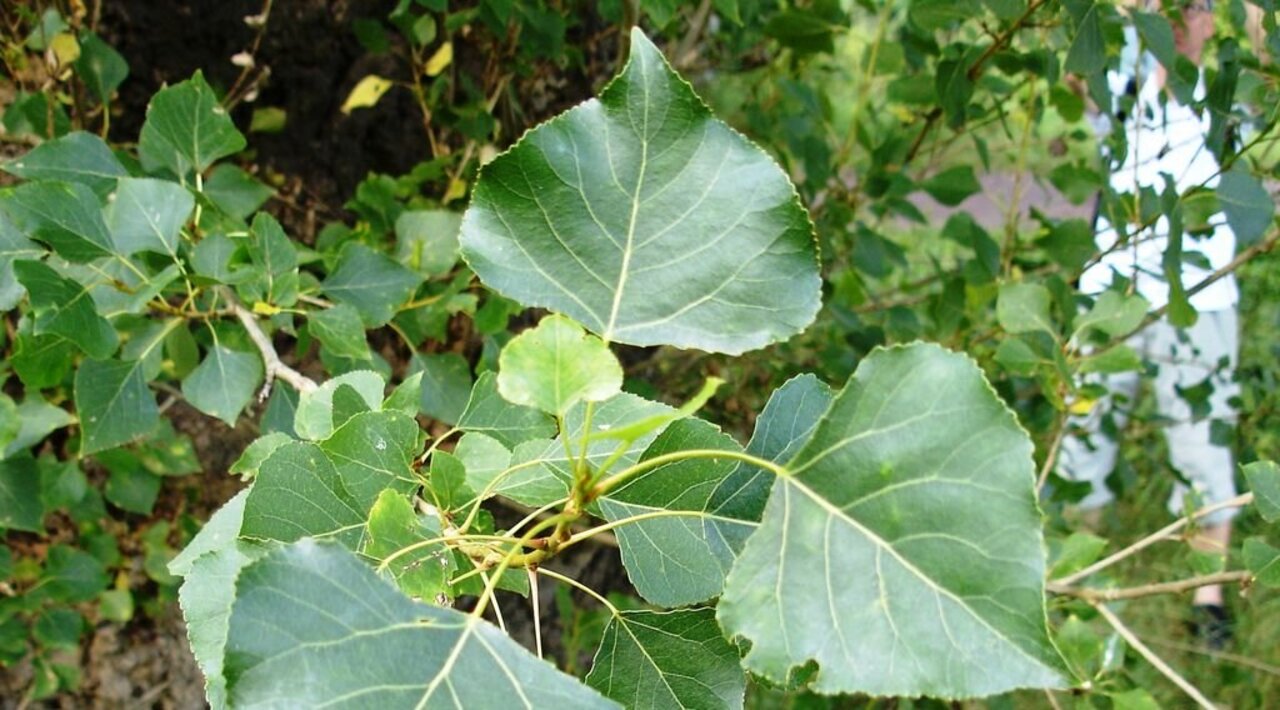Project
Poplar genotyping

Genetic identification in the genus Populus L. with nuclear microsatellite markers
The increasing interest in cultivation of poplars as an energy crop for biomass production actually requires much effort in breeding programmes, especially for varieties suitable for growth in short rotation systems.
Background and Objective
Existing clone collections and offspring material growing in field trials are composed of members of the sections Tacamahaca (balsam poplars), Aigeiros (black poplars, cottonwoods) and Populus (white poplars and aspens) and intersectional hybrids between black and balsam poplars. The application of genetic markers is a very important tool for the identification of clones in poplar and aspen breeding, as morphological traits are not sufficient for that purpose for closely related material. Furthermore, it can support the taxonomic classification in case of doubt.
Approach
Nuclear microsatellite loci are well-established
markers for clone identification and paternity
tests and are effective in poplars as well. They provide reliable results for a genetic characterisation
of parents and their offspring individuals. Additional taxonomic information can be derived from single informative markers as well as from multivariate analyses.
Links and Downloads
Involved Thünen-Partners
Duration
Permanent task 9.2009
More Information
Project status:
ongoing
Publications
- 0
Belyaeva IV, Dutton C, Govaerts RHA, Liesebach H, McGinn K, Steenackers M, Taylor G, Pickett J (2020) Verification of names for certain Populus L. clones (Salicaceae) commonly grown in the United Kingdom. Skvortsovia 6(3):87-116, DOI:10.51776/2309-6500_2020_6_3_87
- 1
Meyer M, Zacharias M, Morgenstern K, Krabel D, Liesebach H (2018) Variable genotypes at the cpDNA marker locus trnDT in spontaneous rejuvenation of the species complex around the European black poplar (Populus nigra L.) and its relatives collected in Germany. Landbauforsch Appl Agric Forestry Res 68(1-2):93-102, DOI:10.3220/LBF1544605045000
- 2
Liesebach H, Liesebach M (2016) Züchtung von Aspen und Hybridaspen für den Kurzumtrieb - Genotypisierung auf Versuchsflächen zum Nachweis von Wurzelbrut. J Kulturpfl 68(1):1-6, DOI:10.5073/JFK.2016.01.01
- 3
Ulrich K, Liesebach H, Ewald D (2015) Erzeugung, Nutzung und genetische Charakterisierung polyploider Pappeln. Thünen Rep 26:98-120
- 4
Liesebach H, Ulrich K, Ewald D (2015) FDR and SDR processes in meiosis and diploid gamete formation in poplars (Populus L.) detected by centromere-associated microsatellite markers. Tree Genetics Genomes 11:801, DOI:10.1007/s11295-014-0801-6
- 5
Ewald D, Ulrich K, Liesebach H (2012) Erzeugung triploider Individuen und intersektioneller Hybriden bei verschiedenen Pappelarten. Beitr Nordwestdt Forstl Versuchsanst 8:181-193
- 6
Liesebach H, Schneck V, Ewald E (2011) Klonidentifizierung in der Gattung Populus L. mit nuklearen Mikrosatellitenmarkern. Mitt Forschungsanst Waldökologie Forstwirtsch 69/11:115-122
- 7
Liesebach H, Naujoks G, Ewald D (2011) Successful hybridisation of normally incompatible hybrid aspen (Populus tremula x P. tremuloides) and eastern cottonwood (P. deltoides). Sex Plant Reprod 24(3):189-198, doi:10.1007/s00497-010-0156-6
- 8
Liesebach H, Schneck V, Ewald E (2010) Clonal fingerprinting in the genus Populus L. by nuclear microsatellite loci regarding differences between sections, species and hybrids. Tree Genetics Genomes 6(2):259-269, DOI:10.1007/s11295-009-0246-5

![[Translate to English:] [Translate to English:]](/media/_processed_/f/3/csm_2022_Titelbild_gross2_Saatgut_in_Hand_9ffb8f5748.jpg)
![[Translate to English:] [Translate to English:]](/media/_processed_/f/3/csm_2022_Titelbild_gross2_Saatgut_in_Hand_c17270fcc0.jpg)





